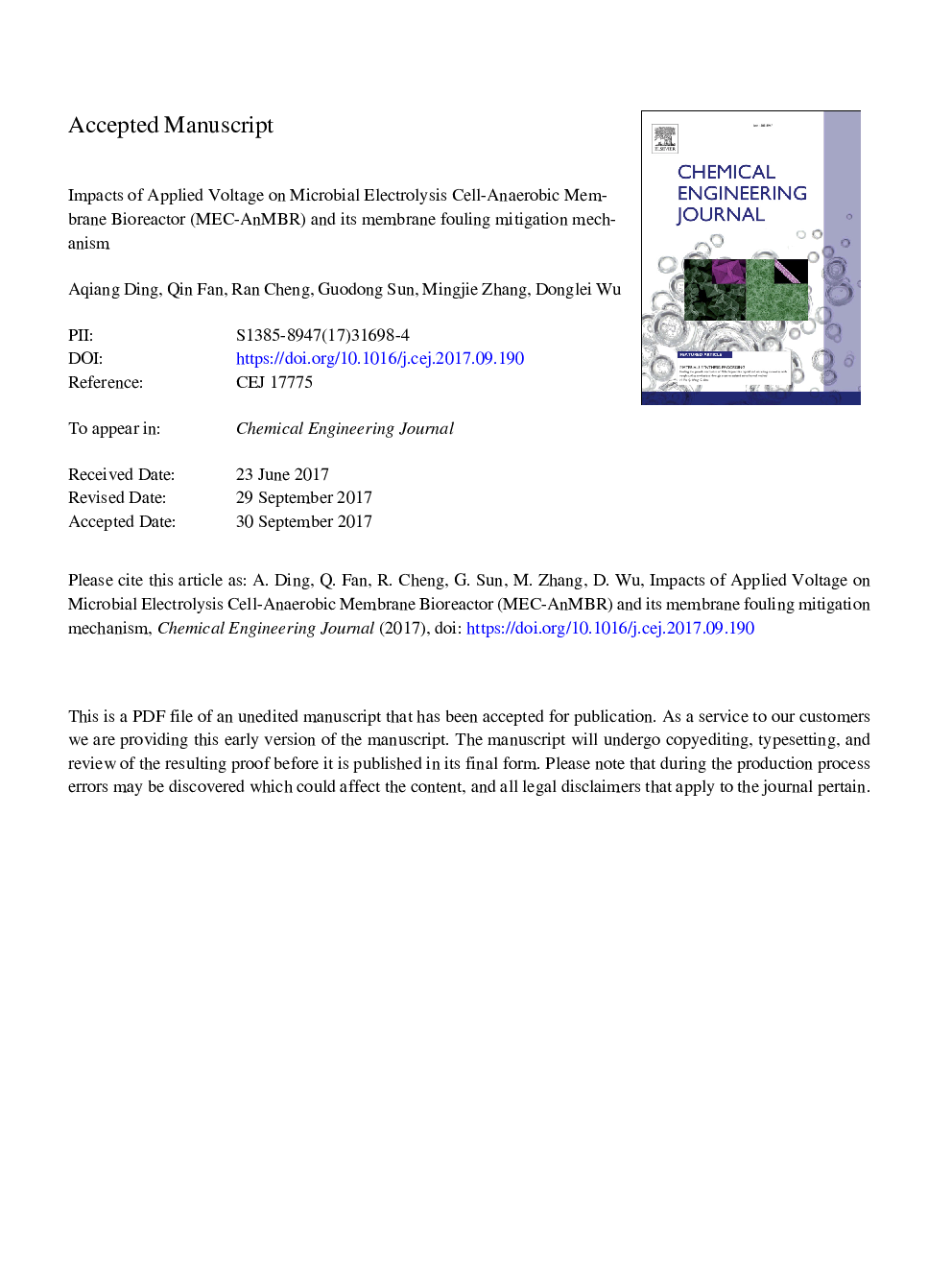| Article ID | Journal | Published Year | Pages | File Type |
|---|---|---|---|---|
| 4762754 | Chemical Engineering Journal | 2018 | 26 Pages |
Abstract
Anaerobic membrane bioreactor (AnMBR) is an efficient technology to treat high concentration wastewater, however membrane fouling is the major limiting factor for its widely application. This study brought the electric field into AnMBR system to couple microbial electrolysis cell (MEC) with AnMBR thus built a new type of MEC-AnMBR reactor. We explored the degradation effect of organic pollutants and membrane fouling in the reactor under different conditions. Results indicated that the chemical oxygen demand (COD) removal rate reached maximum when applied voltage was 0.6â¯V, and it was almost 1.2 times higher than that without applied voltage (0â¯V). On the other hand, the membrane fouling rate of MEC-AnMBR reactor gradually slowed down with the increase of applied voltage. The cycle of membrane fouling could be extended from 60 to 98â¯h. Experimental results suggested that the major reason was the decrease of extracellular polymeric substance-protein (EPSp)/extracellular polymeric substance- polysaccharide (EPSc) ratio of sludge while along with the increase of applied voltage. The increased applied voltage would result in increase of absolute value of zeta potential of sludge particles and decrease of sludge viscosity. The development of MEC-AnMBR has significant effects on high-concentration organic wastewater treatment and the improvement of AnMBR.
Related Topics
Physical Sciences and Engineering
Chemical Engineering
Chemical Engineering (General)
Authors
Aqiang Ding, Qin Fan, Ran Cheng, Guodong Sun, Mingjie Zhang, Donglei Wu,
